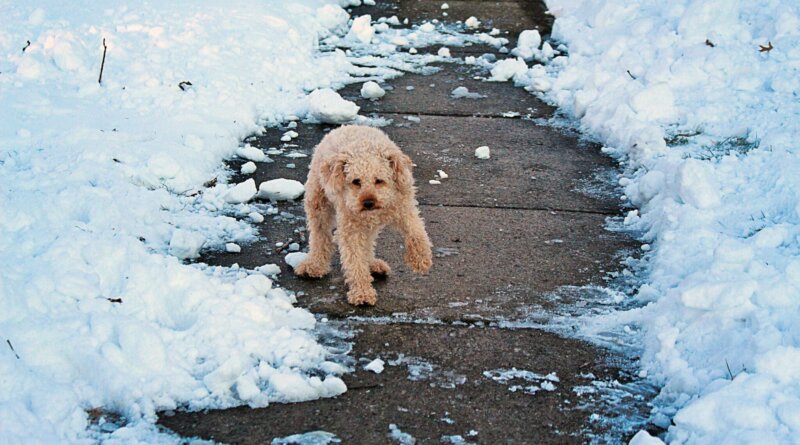How Cold Is Too Cold for Dogs?
There is no hard-and-fast rule for how cold is too cold for dogs, but it is important to understand when it is too cold to walk your individual dog. Cold tolerance varies widely among dogs and is affected by the dog’s size, coat, activity level, and individual preferences. In general, many dogs are much happier playing outside in cold weather than we are, although some may need some winter outerwear or even just a raincoat.
How to Tell When it is Too Cold to Walk Your Dog
Signs that indicate your dog is too cold and wants to skip her walk today include:
- Reluctance to go outside
- Shivering
- Picking up her feet frequently when standing
- Lying down curled up in the snow
- Unexplained limping that goes away once inside
Icy sidewalks may not be bothering your dog. Instead, consider one of the most common issues with winter walks for your dog: rock salt and other ice melt products. When salt melts ice on a sidewalk, it creates extremely cold water that may even sting when it touches your dog’s paw pads.
If your dog likes to play in the snow in your yard but hates walking on the salted sidewalk, consider getting waterproof booties to protect her feet from the ice melt. My favorite booties for my dogs in this situation are Pawz rubber boots. Maybe use affiliate link: They are lightweighttps://pawzdogboots.com/ht, inexpensive, and stay on well.
How Cold Is too Cold for My Dog?
To determine what temperatures are comfortable for your dog, consider her size, coat, activity level, and personal preferences. A shorter walk might be the best choice. It’s important to pay attention to what your dog is telling you and what she wants to do.
Coat Type
Coat type is a big indicator of your dog’s cold tolerance. Most northern breeds that were bred for dog sledding or hunting in arctic climates have dense, thick coats with multiple layers. The outer layer is long and harsh, repelling water. The inner layer is dense, soft, and wooly, perfectly insulating their bodies. These dogs were literally born for winter, and thrive in cold weather and snowy conditions even when temperatures dip below zero.
Some dogs look shorthaired at first glance but still have a very dense coat. For example, Labrador Retrievers have a thick coat to help keep them warm while swimming, and German Shepherd Dogs have a double coat with those two layers.
True shorthaired dogs, such as a Vizsla or Greyhound, do not have proper insulation. These dogs will often be happiest wearing a coat when outside in temperatures below freezing.
And not all longhaired dogs are well insulated. Yorkshire Terriers and Shih Tzu have long luxurious coats, but lack that warm wooly undercoat.
Size
Larger dogs are more tolerant of cold than small dogs. Big dogs have a smaller surface area compared to their overall body size, so they retain heat better. A big dog like a Rottweiler will probably have a blast hiking for hours in a winter wonderland, while a tiny Chihuahua is going to get cold quickly.
Bulk makes a difference too. Greyhounds may be tall, but they are also lean with minimal body fat. They will get cold much faster than a sturdy Bulldog.
Activity Level
Just like us, dogs heat up as they exercise. Unlike us, dogs only sweat from the bottom of their paws, so they don’t need to worry about sweaty bodies making them feel cold after winter exercise.
If your dog is running and playing outside, she will stay comfortable for a longer time than if she is just standing in the yard looking bored.
Personal Preferences
Even if your dog looks like a true winter warrior, she just may not like the cold. Other dogs who have small lean bodies and a short coat may love playing in the snow. Honor your dog’s opinions about winter weather and find indoor exercise options for those pooches who just don’t care for snowshoeing.




